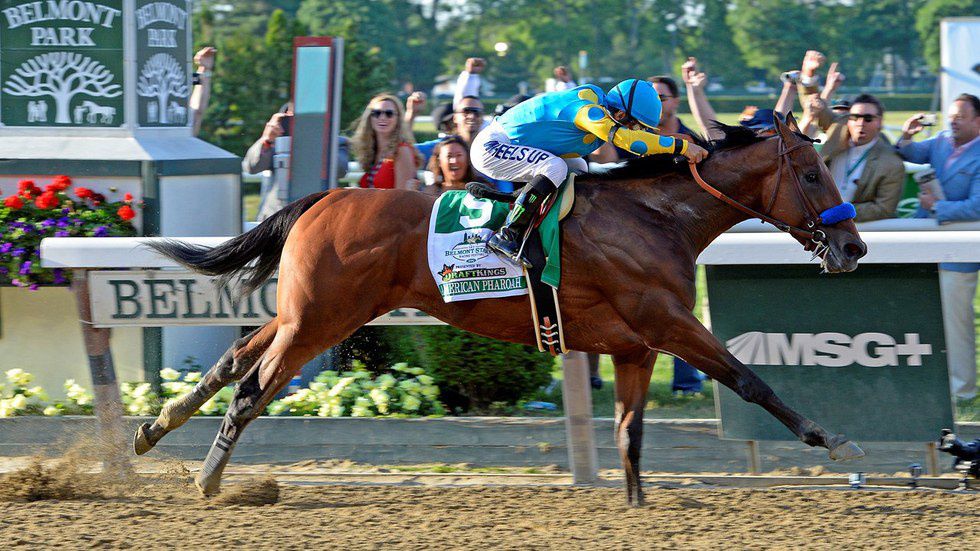When I hear the words "Belmont Stakes" I am immediately reminded of the town I grew up in: Floral Park. Belmont Race Track sits right behind my elementary school and right next to the town high school. I grew up listening to the sound of the horns during recess, smelling that not so wonderful smell of horses when running on the track before lacrosse practice, and climbing onto the starting gate like it was a jungle gym. For many people, the Belmont Stakes means nothing. But for many others, the Belmont Stakes is a day that we will forever remember. I know I will always remember leaning on the railing watching Triple Crown winner American Pharoah ridden by jockey Victor Espinoza pass right in front of me for the rest of my life.
Horse breeding and racing has a long, rich history as does the Belmont Stakes. To tell you all about horse breeding and races would take a while, believe me. So, let me give you the low down on the Belmont Stakes at least.
The Stakes were named after a man named August Belmont I (1816-1890) who was a very influential man of many trades--politics, diplomacy, banking, and horse breeding to name a few. He was one of the wealthiest Americans of his times and much of his money was poured into Thoroughbred horse racing. He contributed tremendously to the first Belmont Stakes race which led to the race being named after him.
The first Belmont Stakes race did not take place at Belmont Park on Long Island. In fact, it took place in Jerome Park that is now part of the Bronx. August Belmont was also one of the main financiers of the park. This race track had three turns instead of two, which are typical of race tracks. The Belmont Stakes then bounced to Morris Park Racecourse until finally moving to its home at Belmont Park in 1905. The Stakes race track started at a length of 1 5/8 miles long and dropped varyingly throughout the years until it reached 1.5 miles with two turns where it remains today.
The Belmont Stakes is one of the three American Triple Crown races. The Kentucky Derby followed by the Preakness both precede the Belmont Stakes. The stakes is the oldest of the three and the longest of the three. In order to win the Triple Crown, the horse must win the Kentucky Derby, the Preakness, and the Belmont Stakes which is no easy feat especially with the tracks getting progressively longer. Only twelve horses throughout the races' history have one the coveted Triple Crown title, trophy, and blanket of carnations (one of which, amazingly, I was able to witness). So, if you don't win the Derby, there is no way you can win the Triple Crown. To qualify for the Derby there are a series of races known as The Road to the Derby, but let's save that for another day.
The most amazing part and in my opinion most noteworthy fact about the Triple Crown races is that any horse can enter to run in the Preakness and the Belmont Stakes, so wining the Triple Crown is an amazing accomplishment. Before American Pharoah won in 2015, the last Triple Crown winner was in 1978. These races are just one part of our history that show just how hard we are willing to work and train to accomplish something incredible with the odds stacked against us.
The Belmont Stakes is the final leg in a series of races that go to show true resilience and determination. It is a beautiful and amazing sport to watch. While some people may be against horse racing, I will always have a huge place in my heart for the Belmont Stakes and Triple Crown races. Whenever I hear those starting horns, I know it won't be long until I hear those three words, "And they're off!"

















